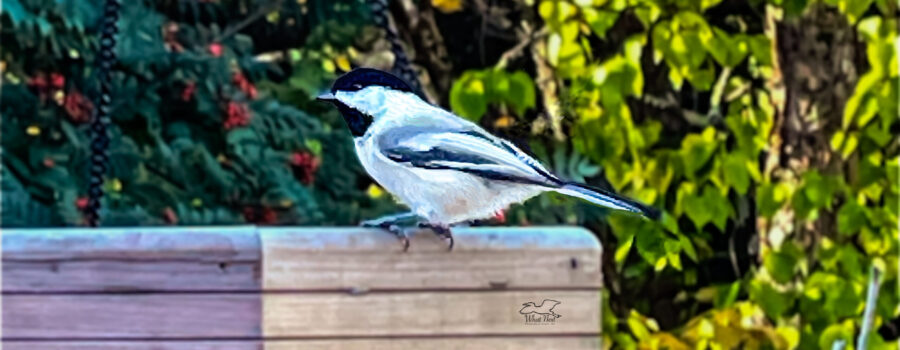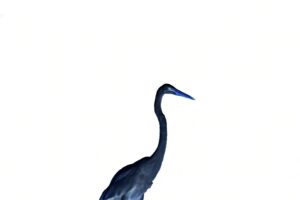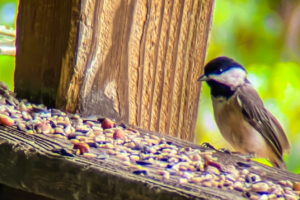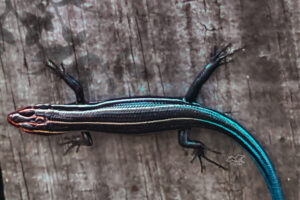The Black Capped Chickadee is an Amazing, Loved Songbird

One of the things I really enjoyed on my visit to Alaska was watching the birds that came to the feeder my brother had set up on his upstairs porch. I was actually surprised to discover that a few of the birds that came to the feeder were birds that also live in Florida, like the downy woodpecker. There were also some birds that looked very similar to Floridian birds. One of those was the black capped chickadee (Poecile atricapillus), which looks very much like our Carolina chickadee. There are a few differences, but they can be difficult even for experienced birders to spot on birds that are moving around. To confuse the matter more, in the limited area where their ranges overlap, the two species may interbreed. In general, the black capped chickadee is a little larger than the Carolina chickadee, and it has a more rusty color on it’s flanks.
Black capped chickadees are nonmigratory birds, although some birds that live in the coldest parts of their range may move southwards during the winter. They can be found from Alaska across southern Canada and the northern United States to Maine and New Brunswick. This bird is much loved because it is common and very comfortable around people. It’s a frequent visitor to backyard feeders and some birds will learn to eat from a person’s hand. The fact that it is well loved shows in it’s being the state bird of Maine and Massachusetts and the provincial bird of New Brunswick. When not in backyards, the best places to find these birds are deciduous or mixed forests where they can easily find cavities to nest in and abundant food resources. They are omnivores that will eat a variety of foods including caterpillars and other insect larvae, seeds, berries, and small nuts.

Black capped chickadees are very well adapted to the environment where they live. Two of their adaptations are especially interesting. First, these birds are well known for caching food, usually seeds, but sometimes insects, too. They have incredible memories for where the food is cached and can return for it much, much later. Each spring, the neurons that store those memories die off and are replaced by new ones to be used to store new memories. The other remarkable thing about these guys is that during the coldest nights of winter they can lower their temperatures by up to 12 degrees, allowing them to conserve energy. This is a very unusual adaptation in a warm blooded animal and only happens in a few other species. I find both of these features to be absolutely incredible! It just goes to show how amazing nature can be.





Recent Comments